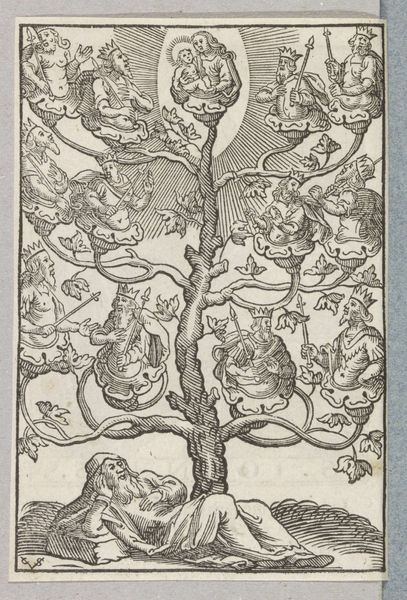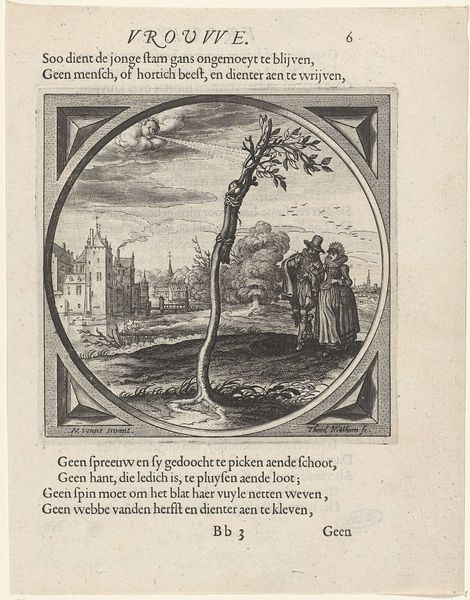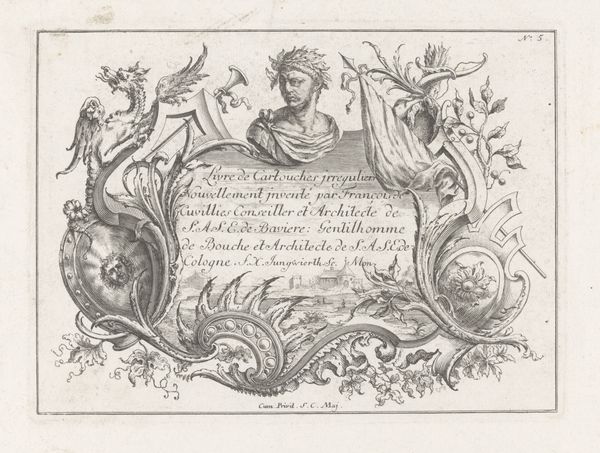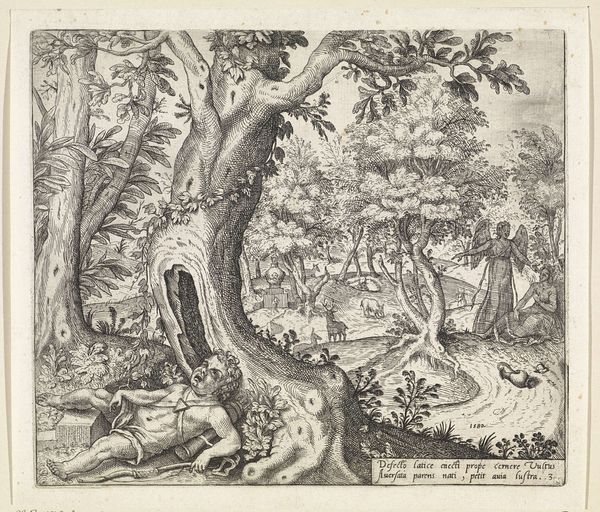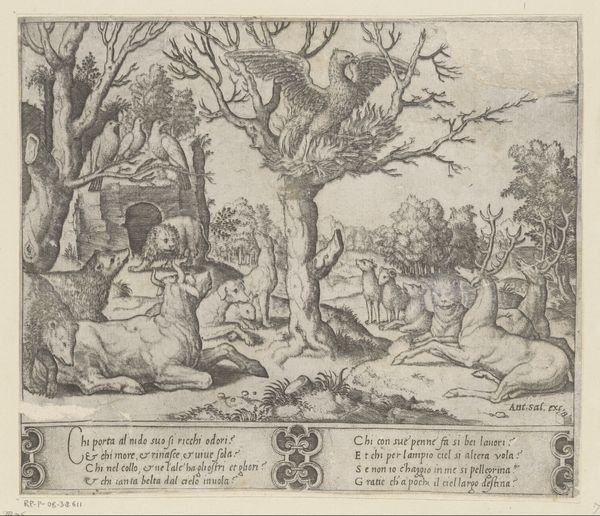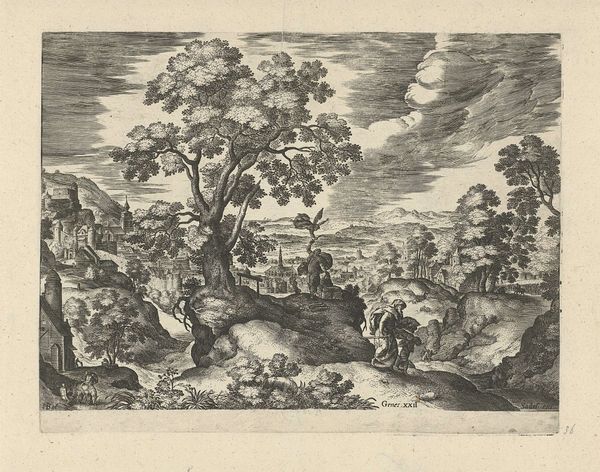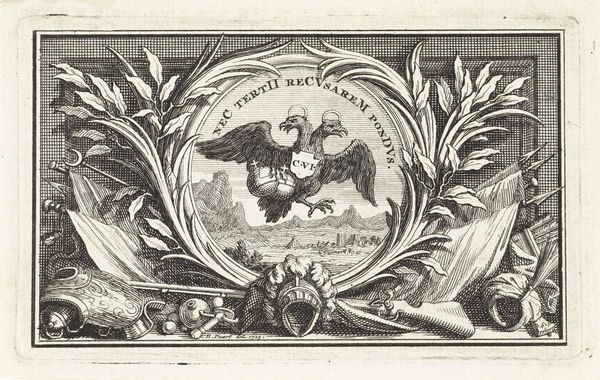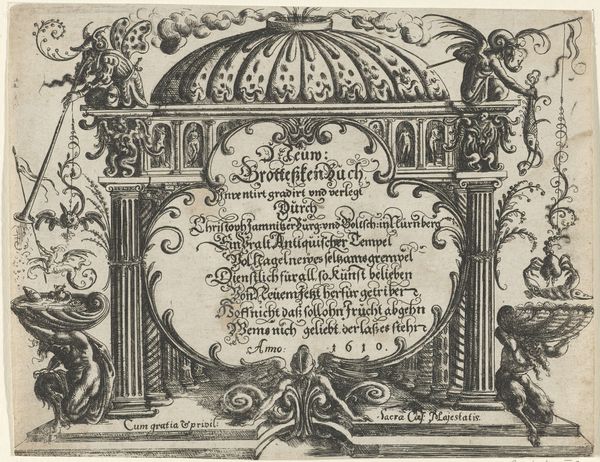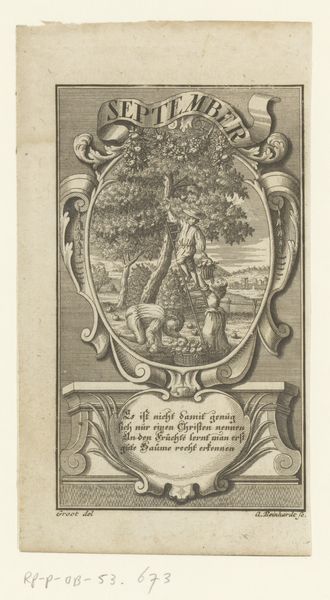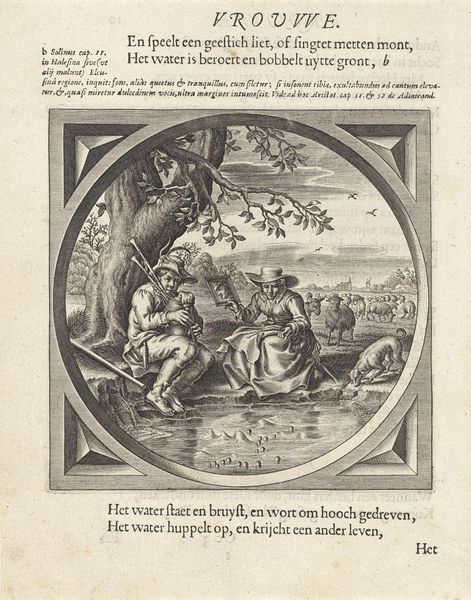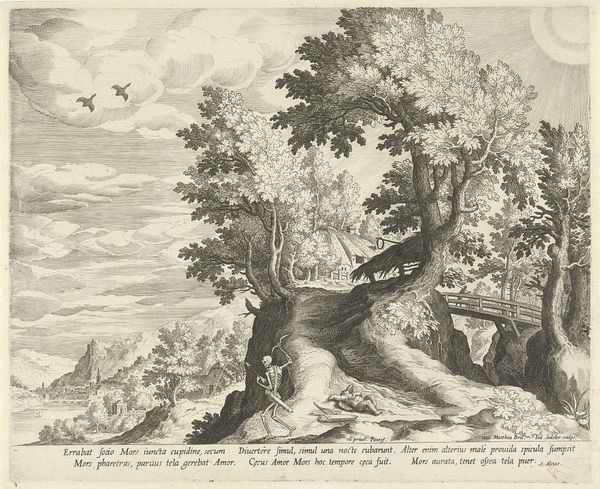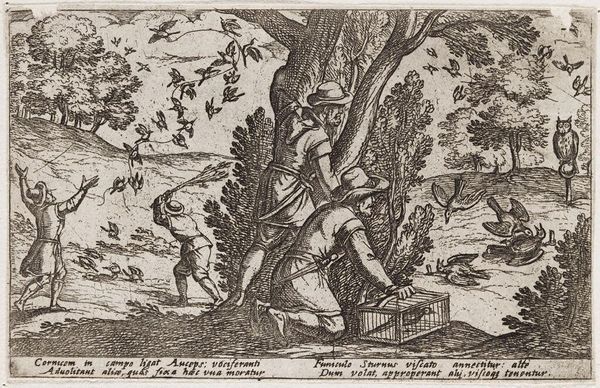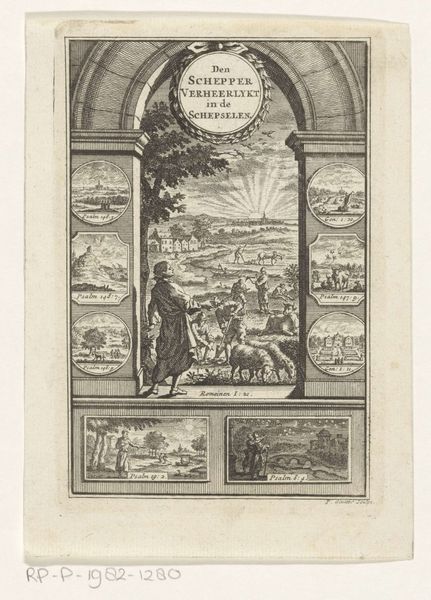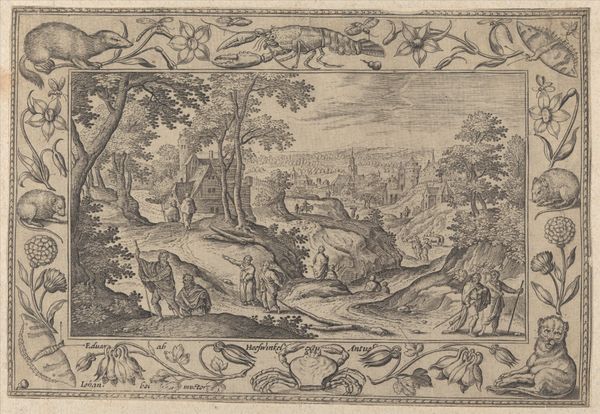
drawing, ink, engraving
#
drawing
#
landscape
#
mannerism
#
11_renaissance
#
ink
#
engraving
Dimensions: height 148 mm, width 189 mm
Copyright: Rijks Museum: Open Domain
Curator: Christoph Jamnitzer created "Derde titelblad" between 1573 and 1610, a piece rendered with engraving and ink, typical mediums for the era. What strikes you first? Editor: It's remarkably busy, almost overwhelming, with detail crammed into every corner of the image. The eye struggles to find a place to rest amid the landscape backdrop behind a massive stylized tree dominating the composition. Curator: Indeed. And note how Jamnitzer blends naturalistic elements with grotesque ornamentation. This was a signature characteristic of Mannerism, mirroring a time of upheaval when traditional artistic and social orders were being challenged. It speaks to the unease felt towards the established religious and political norms, using the bizarre and extravagant as commentary. Editor: Yes, and let’s dissect this central tree. It isn’t just a tree but an elaborate framework around a text panel—a symbolic Tree of Knowledge, maybe? The curious objects hanging from its branches – tools, bells, odd fruits – these contribute to the puzzling nature of the whole scene. Curator: The text is also central, of course. It suggests this elaborate 'Radesco Tree' yields wondrous fruit, as if promising enlightenment or some kind of transformative knowledge if properly understood. We see the rising merchant class embracing humanist thought and exploring new scientific frontiers and discoveries while grappling with the trauma of religious conflict. Editor: The landscape stretching behind seems to offer a grounding, a reality, compared to the fanciful tree. Is Jamnitzer contrasting nature with human artifice and the limits of understanding? Curator: Quite possibly. Consider the landscape could represent the known world. Whereas the tree represents knowledge systems and the text might imply the ability of society and nature, grafted together, to resolve the ongoing societal rifts. The fruit from which the best yield comes not just from religious devotion but civic engagement. Editor: So, beyond just formal considerations, we’re pushed towards reflecting on art’s role within societal shifts. It challenges a singular perspective. I appreciate how analyzing its form necessitates addressing these sociohistorical issues, ultimately expanding what one brings away from experiencing the work. Curator: And by investigating the sociohistorical setting, it pushes us to reflect more clearly on how we examine the artistic form and compositional strategies employed. Art should promote questioning.
Comments
No comments
Be the first to comment and join the conversation on the ultimate creative platform.
